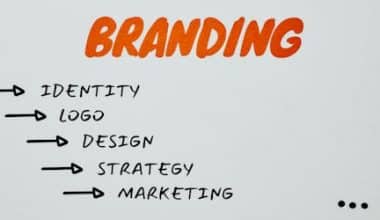Marketing and advertising are two sides of the same coin, but they serve different purposes. By understanding these differences and working with a solid marketing framework, you can create a strategy that goes beyond fleeting impressions and builds a loyal customer base for your business. What exactly is the difference between marketing and advertising? As an expert who has gained opportunities to have worked with marketing and advertising firms, I’ve often found myself in conversations where people use the terms “marketing” and “advertising” interchangeably. It’s a common misconception and one that I’m here to clear up. Let me share some details about the key differences between these two powerful business tools.
key Takeaways
- Understanding the target audience is a critical function of marketing, involving deep insights into consumer behaviour and preferences, which informs the development and positioning of products or services.
- While marketing aims to establish long-term customer relationships and brand loyalty, advertising focuses on immediate impact, such as boosting sales and generating leads.
- Marketing is a long-term, comprehensive process that includes understanding customer needs, creating value, and building strong relationships, while advertising is a tactical, short-term effort focused on promoting specific products or services to generate immediate results.
Understanding the Difference Between Marketing Vs Advertising
Effective advertising relies on a solid marketing foundation, while marketing strategies are often brought to life through advertising campaigns. Marketing lays the groundwork, while advertising brings that strategy to life in a compelling way. One of the key differences between marketing and advertising lies in their scope and objectives. Marketing is a long-term, holistic strategy that aims to build a strong brand, foster customer relationships, and drive sustainable growth. Advertising, in contrast, is often more short-term and tactical, with a focus on immediate results and lead generation. Defining both marketing and advertising will give you a clear view of what value they possess.
What is Marketing?
Marketing is a comprehensive process that involves various activities aimed at understanding, creating, communicating, and delivering value to customers. It encompasses the strategies and tactics used to identify and satisfy customer needs and wants. Marketing includes market research, product development, pricing, distribution, and promotion. It is a holistic approach that focuses on building long-term relationships with customers and creating customer satisfaction.

What is Advertising?
Advertising is a specific component of marketing that involves the paid promotion of products, services, or brands to a target audience. It is a form of communication that aims to inform, persuade, and influence consumers to take a desired action. This involves making a purchase or adopting a particular behaviour. Advertising can take various forms, including print ads, television commercials, online banners, social media campaigns, and more. It is a strategic effort to create awareness, generate interest, and build brand recognition. Advertising is an essential part of marketing. It is not the only method used by marketers to promote products or services.
For instance, while conducting a thorough analysis of my uncle’s company that had great product, but wasn’t making sales. It became clear that the problem wasn’t with their advertising campaigns – they were quite eye-catching and well-executed. The issue lies in their overall marketing approach. They were so focused on creating flashy ads that they neglected the foundational elements of marketing, such as market research, branding, and customer relationship management.
At that phase, such experience taught me a valuable lesson: marketing and advertising, while closely related, are distinct disciplines with their own unique goals, strategies, and metrics. Understanding these differences is crucial for any business looking to succeed in today’s competitive landscape.
Scopes and Objectives of Marketing and Advertising that Differentiate Them
Marketing and advertising are two crucial components of any business strategy. While they may seem similar, they have distinct differences that can significantly impact the success of a business. These are enumerated below:

Marketing
Marketing is a vast and multifaceted field, encompassing a diverse array of strategies and tactics. From market research and product development to pricing and distribution, marketing professionals wear many hats and tackle a wide range of responsibilities.
One of the core functions of marketing is to identify and understand the target audience. This involves researching consumer behaviour, pain points, and purchasing preferences. By gaining deep insights into the needs and desires of your target market. You can then craft tailored solutions and positioning that resonate on a deeper level.
Another critical aspect of marketing is the development and refinement of the product or service offering. Marketers work closely with product teams to ensure that the result aligns with the identified market needs. This may involve iterative design, testing, and optimization to ensure a seamless and valuable customer experience.
But marketing doesn’t stop there. Pricing strategies, distribution channels, and even strategic partnerships all fall under the marketing umbrella. Marketers must navigate the complex web of factors that influence the success of a product or service, carefully balancing cost, accessibility, and competitive positioning.
The true power of marketing lies in its ability to create a cohesive, holistic strategy that encompasses all these elements. By aligning these various components, marketers can orchestrate a symphony of customer-centric initiatives that drive growth, loyalty, and long-term success.
Advertising
While marketing is the overarching strategy, advertising is the more targeted and specific component. Advertising is the art of crafting and delivering persuasive messages that capture the attention of the target audience and compel them to take action.
At its core, advertising is all about communication. Advertisers must deeply understand their audience, their pain points, and their motivations. Armed with this knowledge, they can then create captivating stories, visuals, and messages that resonate on an emotional level.
One of the key distinctions of advertising is its focus on specific channels and platforms. Advertisers meticulously select the most effective channels to reach their target audience. This is whether it’s television, print, digital, or a combination thereof. By leveraging the unique strengths of each medium, they can optimize the impact and reach of their messages.
Advertising also places a strong emphasis on creativity and innovation. Advertisers are constantly pushing the boundaries, experimenting with new formats, and finding fresh ways to cut through the clutter and captivate their audience. From vibrant visual campaigns to thought-provoking narratives, the best advertising campaigns are the ones that leave a lasting impression.
But advertising is not just about the creative output. It also requires a deep understanding of data, analytics, and performance metrics. Advertisers must continuously measure the effectiveness of their campaigns, analyze the results, and make data-driven decisions. This is a result of optimizing their strategies and maximising their return on investment.
How can Marketing and Advertising Impact a Business?
Let me share with you how marketing and advertising can impact a business.
#1. Strategic Approach
Marketing takes a holistic and strategic approach by considering all aspects of the business. This includes product development, pricing, distribution, and customer satisfaction. It focuses on identifying customer needs, creating value, and building long-term relationships. Advertising, on the other hand, is a tactical tool used to promote specific products or services to a target audience. I once conducted market research with my company’s marketing department to understand our target audience’s needs and preferences. Based on the insights gained, they developed a new product that addressed those needs. Through strategic pricing and effective distribution channels. We were able to successfully launch the product and build a loyal customer base.
#2. Longevity and Relationship Building
Marketing aims to establish long-term relationships with customers by building trust and delivering value over time. It focuses on creating brand awareness, enhancing brand reputation, and fostering customer loyalty. While advertising often has a shorter-term impact and is primarily focused on generating immediate sales or leads.
#3. Targeting and Customization
Marketing allows businesses to target specific customer segments based on their demographics, preferences, and behaviours. It enables businesses to customize their offerings to meet the unique needs of different customer groups. Advertising, on the other hand, often has a broader reach and may not be as targeted or customized.
The Connection Between Marketing and Advertising
While marketing and advertising are distinct disciplines, they work best when used in tandem.
Effective marketing provides the foundation for successful advertising campaigns, ensuring that the right message is delivered to the right audience at the right time. Once you have this solid marketing foundation in place, you can then leverage advertising to amplify your message and reach a wider audience. Your advertising campaigns might include targeted social media ads, influencer partnerships, and even traditional media placements, all designed to drive brand awareness and product sales.
The key is to master both marketing and advertising as complementary tools to drive real business results. With the right strategies and alignment between the two, you can take your business to new heights.
Online Marketing and Advertising
Online marketing encompasses a broader range of strategies and tactics used to promote products or services through digital channels, while advertising specifically refers to paid promotional efforts within the online marketing realm. These include activities such as SEO, content marketing, social media marketing, and email marketing, while advertising focuses on creating and distributing paid messages through various digital channels.
Of course, the world of online marketing and advertising is constantly evolving, and it’s been fascinating to witness the rapid changes and innovations that have taken place over the years. But that’s what makes this field so exciting. As a professional, I thrive on the challenge of staying ahead of the curve, constantly learning and adapting to new trends and technologies. With the right strategies and tools in place, I’ve seen firsthand how online marketing and advertising can be a game-changer for businesses of all sizes.
One of the most significant breakthroughs came when we started to leverage targeted digital advertising. By leveraging platforms like Google Ads and Facebook Ads, we were able to reach our ideal customers with laser-sharp precision, delivering personalized messaging and offers that resonated with them.
Top Marketing and Advertising Companies
Having had the privilege of collaborating with some of the top marketing and advertising agencies in the industry. Each partnership has been a unique and invaluable experience, shaping my understanding of the contemporary nature of marketing and advertising.
- Clutch.co: One of the first agencies, my friend worked with was Clutch.co, a renowned platform that connects businesses with the right service providers. When I was tasked with finding the perfect experiential marketing agency for a client, Clutch.co proved to be an invaluable resource. Their comprehensive directory of top agencies, coupled with detailed reviews and ratings, made the selection process seamless.
- B2B Bandit: This is a 5-star rated agency with an impressive portfolio of successful experiential campaigns. Their attention to detail, creative flair, and proven track record of delivering exceptional results made them the ideal partner for my client’s needs.
Also Read: Marketing Communications: Strategies to Amplify Your Brand’s Voice
- iT Rate: When searching for the best brand experience companies to elevate a client’s product launch, iT Rate’s directory proved to be a game-changer. The platform’s intuitive filtering options allowed me to quickly narrow down the options based on factors like budget, size, and reviews. This helped me identify Penta Marketing Agency as the perfect fit, with its focus on creating authentic and memorable experiences for consumers.
- DesignRush: This leading agency directory showcases the top experiential marketing companies. Their in-depth profiles and case studies provided invaluable insights into the capabilities of agencies like GRADIENT, a New York-based creative powerhouse that specializes in human-centric, technology-driven experiences.
As a way to guide you, these comprehensive templates by Lamphill provide structure and guidance for understanding the differences between marketing and advertising, planning effective strategies, and executing successful campaigns. Click Download below to get your offline copy.
What is the Difference Between a Marketing and Advertising Degree?
A marketing degree provides a comprehensive understanding of various aspects of marketing, including market research, consumer behaviour, product development, pricing strategies, distribution channels, and marketing communication. On the other hand, an advertising degree focuses specifically on the field of advertising, covering topics such as advertising strategy, creative development, media planning, and account management. While a marketing degree offers a broader perspective on the overall marketing process, an advertising degree specializes in the creative and strategic aspects of advertising campaigns.
What is the Difference Between Social Marketing and Advertising?
Social media marketing involves creating and sharing organic content on social media platforms to engage your audience and achieve marketing goals. It focuses on building relationships, increasing brand awareness, and driving engagement through posts, stories, and videos. Social media advertising refers to paid advertising campaigns on social media platforms that target specific audiences with tailored ads to drive conversions and sales. The key differences between the two are their purpose, approach, metrics, and timeframe.
Conclusion
I have created an establishment in the world of marketing and advertising, making you understand that the differences between marketing and advertising are the key to crafting a comprehensive strategy that resonates with your audience. Are you ready to take your marketing and advertising efforts to the next level?






